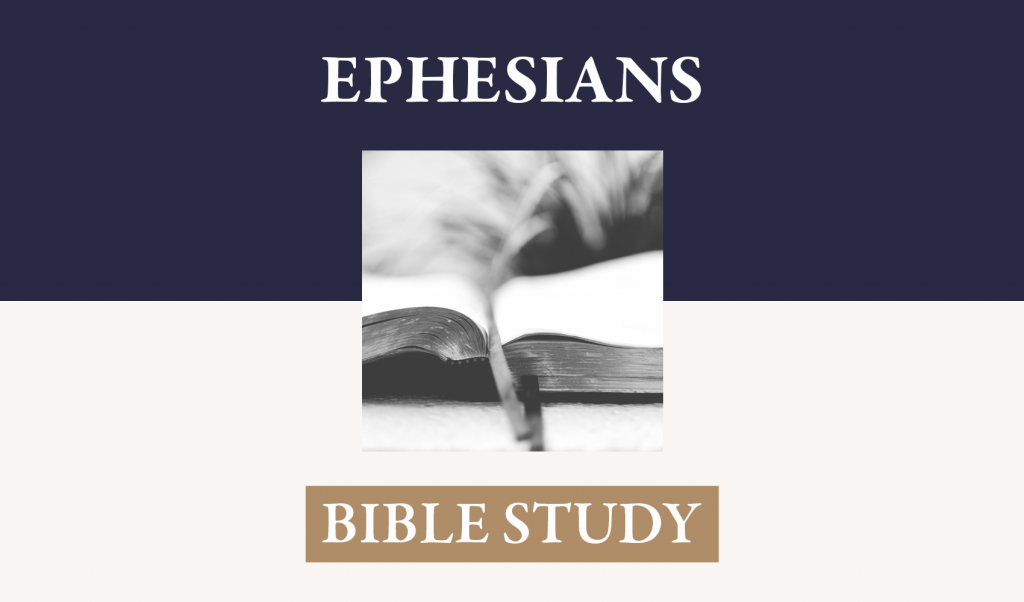Week of January 13, 2019
The Point: Our relationship with Christ should be reflected in our unity with one another.
One in Christ: Ephesians 2:11-22.
[11] Therefore remember that at one time you Gentiles in the flesh, called “the uncircumcision” by what is called the circumcision, which is made in the flesh by hands– [12] remember that you were at that time separated from Christ, alienated from the commonwealth of Israel and strangers to the covenants of promise, having no hope and without God in the world. [13] But now in Christ Jesus you who once were far off have been brought near by the blood of Christ. [14] For he himself is our peace, who has made us both one and has broken down in his flesh the dividing wall of hostility [15] by abolishing the law of commandments expressed in ordinances, that he might create in himself one new man in place of the two, so making peace, [16] and might reconcile us both to God in one body through the cross, thereby killing the hostility. [17] And he came and preached peace to you who were far off and peace to those who were near. [18] For through him we both have access in one Spirit to the Father. [19] So then you are no longer strangers and aliens, but you are fellow citizens with the saints and members of the household of God, [20] built on the foundation of the apostles and prophets, Christ Jesus himself being the cornerstone, [21] in whom the whole structure, being joined together, grows into a holy temple in the Lord. [22] In him you also are being built together into a dwelling place for God by the Spirit. [ESV]
“A Single New Humanity. ‘Alienation’ is a popular word in contemporary society. There are many people, especially young people in the so-called ‘developed’ world, who are disillusioned with ‘the system’, critical of ‘the technocracy’ and hostile to ‘the establishment’, who describe themselves as ‘alienated’. Some work for reform, others plot revolution, others drop out. In no case can they accommodate themselves to the status quo. ‘Alienation’ is partly a sense of disaffection with what is, and partly a sense of powerlessness to change it. This is a widespread feeling in the democratic countries of the West, and Christians would be foolish to ignore it. But long before this current time, the Bible spoke of human alienation. It describes two other and even more radical alienations than the economic and the political. One is alienation from God our Creator, and the other alienation from one another, our fellow creatures. Nothing is more dehumanizing than this breakdown of fundamental human relationships. It is then that we become strangers in a world in which we should feel at home, and aliens instead of citizens. The letter to the Ephesians alludes to both these forms of alienation. Indeed, Paul uses the word in relation to both conditions. The Greek verb translated alienated means to estrange, exclude or alienate. Now this double alienation, or rather its replacement by reconciliation, is the theme of Ephesians 2. In the first half of the chapter [1-10] human beings are depicted as alienated from God. In the second half of Ephesians 2 [11-22] human beings are depicted as alienated also from each other. In particular, Gentiles are described as alienated from the commonwealth of Israel [12]. Of this double Gentile alienation – from God and from God’s people Israel – the so-called dividing wall of hostility [14] was the standing symbol. It was a notable feature of the magnificent temple built in Jerusalem by Herod the Great. The temple building itself was constructed on an elevated platform. Round it was the Court of the Priests. East of this was the Court of Israel, and further east the court of the women. These three courts – for the priests, the lay men and the lay women of Israel respectively – were all on the same elevation as the temple itself. From this level one descended five steps to a walled platform, and then on the other side of the wall fourteen more steps to another wall, beyond which was the outer court or Court of the Gentiles. This was a spacious court running right round the temple and its inner courts. From any part of it the Gentiles could look up and view the temple, but were not allowed to approach it. They were cut off from it by the surrounding wall, which was a one-and-a-half meter stone barricade, on which were displayed at intervals warning notices in Greek and Latin. They read, in effect, ‘Trespassers will be executed.’ This, then, is the historical, social and religious background to Ephesians 2. Although all human beings are alienated from God because of sin, the Gentiles were also alienated from the people of God. And worse even than this double alienation was the active enmity or hostility into which it continuously erupted – enmity between man and God, and enmity between Gentiles and Jews. The grand theme of Ephesians 2 is that Jesus Christ has destroyed both enmities. Both are mentioned in the second half of the chapter, although in the opposite order. Alongside His destruction of these two enmities Jesus has succeeded in creating a new society, in fact a new humanity, in which alienation has given way to reconciliation, and hostility to peace. And this new human unity in Christ is the pledge of that final unity under Christ’s headship to which Paul has already looked forward in 1:10.
The portrait of an alienated humanity, or what we once were [11-12]. In verses 1-3 Paul has portrayed all mankind (Jews and Gentiles alike) in sin and death. Here in verses 11 and 12 he refers particularly to the Gentile or heathen world before Christ. To those whom the Jews (the circumcision) scornfully called the uncircumcision. In verse 12 Paul drops the business of what Jews and Gentiles called each other, and comes on to the serious reality of Gentile alienation. First, they were separated from Christ. The expression is the more tragic because in chapter 1 he has unfolded the great spiritual blessings of being in Christ, and in the earlier part of chapter 2 he has explained how God has quickened, raised and seated us with Christ. But at that time, that is the whole period of history before the coming of Christ, the Gentiles were neither in Christ nor with Christ but separated from Christ; they even had no expectation of a coming Messiah. The Gentiles’ second and third disabilities were similar to one another. They were both alienated from the commonwealth of Israel and strangers to the covenants of promise. Israel was a commonwealth or nation under God, a theocracy, and a covenant people to whom He had committed Himself by a solemn pledge. Thus He had bound Himself to them and ruled over them. But the Gentiles were excluded from this covenant and kingdom. The fourth and fifth Gentile disabilities are starkly stated: having no hope and without God in the world. They were hopeless because, although God had planned and promised to include them one day, they did not know it, and therefore had no hope to sustain them. And they were ‘godless’ because, although God had revealed Himself to all mankind in nature and therefore had not left Himself without witness, yet they suppressed the truth they knew and turned instead to idolatry. This, then, was the terrible fivefold deprivation of the ancient Gentile world before Christ. And we ourselves in our pre-Christian days, it is necessary to add, were in exactly the same plight. We were alienated from God and from His people. Worse, there was in our hearts the enmity to which Paul refers later, so that we rebelled against the authority of God and knew little or nothing of true human community. Is it not the same in today’s world without Christ? Divisiveness is a constant characteristic of every community without Christ. Now the apostle says Therefore remember [11], and again remember [12]. There are some things which Scripture tells us to forget (like the injuries which others do to us). But there is one thing in particular which we are commanded to remember and never to forget. This is what we were before God’s love reached down and found us. For only if we remember our former alienation, shall we be able to remember the greatness of the grace which forgave and is transforming us.
The portrait of the peacemaking Christ or what Jesus Christ has done [13-18]. The parallel between the two halves of Ephesians 2 is obvious. First comes in both cases a description of life without Christ: dead [1-3] and alienated [11-12]. Then follows, again in both cases, the great adversative: But God [4] and But now [13]. The main distinction is that in the second half Paul is stressing the Gentile experience. This, then, in its essence is the difference which Christ has made: you who once were far off have been brought near. Verse 13 is more than a statement that we who were far off have now been brought near; it contains in addition two important references to Christ. For it states that our new nearness to God is both in Christ Jesus and by the blood of Christ. It is essential, if we are to be faithful to the apostle’s teaching, to hold onto these two expressions, and not to emphasize one at the expense of the other. For the blood of Christ signifies His sacrificial death for our sins on the cross, by which He reconciled us to God and to each other, whereas in Christ Jesus signifies the personal union with Christ today through which the reconciliation He achieved is received and enjoyed. Thus the two expressions witness to the two stages by which those far off are brought near. The first is the historical event of the cross, and the second Christian conversion, or the contemporary experience of union with Christ. What Jesus Christ accomplished by His cross Paul will explain in the next verses. Meanwhile, it will be wise for us to observe well the phrase in Christ Jesus with which he introduces his whole exposition of Christ’s reconciling work. It is not a universal reconciliation that Christ achieved or that Paul proclaimed: it is rather a nearness to God and to each other gratefully experienced by those who are near Christ, indeed ‘in’ Him in a vital, personal union. The apostle goes on to elaborate the work of Christ, in terms both of what He did and of how He did it. What He did is plain in verse 14. It is He who shed His blood on the cross and who offers Himself to His people today to be united to them. It is He who by what He did once and now offers is our peace, that is to say, is the peacemaker between us and with God. Both seems clearly to mean Jews and Gentiles, but the reconciliation was broader than that, for, as we saw earlier, the dividing wall of hostility which He has broken down symbolized Gentile alienation from God as well as from Israel. We turn now to the question how Christ did it. What did He do when He died on the cross to get rid of the divisive enmity between Jew and Gentile, between man and God? The answer is given in verses 15 and 16. They are packed tight with theology, and need to be unpacked. Perhaps the best way to clarify the apostle’s sequence of thought is to isolate the three successive main verbs which he uses: abolishing … create … reconcile. A. The abolition of the law of commandments [15a]. The first assertion Paul makes is that Christ broke down the wall, the hostility, by abolishing the law of commandments expressed in ordinances. At first sight this is a surprising, not to say a startling statement. How can the apostle declare that Christ abolished the law when Christ Himself in the Sermon on the Mount specifically declared the opposite, that He had not come to abolish it but to fulfill it? We shall see that the discrepancy is only verbal: in substance they were referring to the law in two different senses. In the Sermon on the Mount the context shows that Jesus was referring to the moral law. He was teaching the difference between Pharisaic righteousness and Christian righteousness, and urging that Christian righteousness involves a deep and radical obedience to the law. Paul’s primary reference here, however, seems to be to the ceremonial law and to its rules and regulations, that is, to circumcision, the material sacrifices, the dietary regulations and the rules about ritual cleanness and uncleanness which governed social relationships. They erected a serious barrier between Jews and Gentiles, but Jesus set this whole ceremonial aside. And He did it in his flesh (surely a reference to His physical death) because in the cross He fulfilled all the types and shadows of the Old Testament ceremonial system. It seems probable, however, that Paul is making another though secondary reference, this time to the moral, not the ceremonial law. Jesus certainly did not abolish the moral law as a standard of behavior; but He did abolish it as a way of salvation. Whenever the law is viewed in this light it is divisive. For we cannot obey it, however hard we try. Therefore it separates us from God and from each other. To sum up, Jesus abolished both the regulations of the ceremonial law and the condemnation of the moral law. Both were divisive. Both were put aside by the cross. B. The creation of a single new humanity [15b]. It is impossible to miss the way in which Paul moves on from the negative to the positive, from the abolition of something old (the divisiveness of the law) to the creation of something new (a single, undivided humanity). Christ brought the two parts of humanity together by a sovereign act of creation. The new man here, like the mature manhood of Ephesians 4:13, is the Christian community viewed corporately. What Paul is referring to, in fact, is not a ‘new man’ but a ‘new human race’, united by Jesus Christ in himself. This new unity through and in Christ does more than span the Jew-Gentile divide. In other passages Paul says that it also does away with sexual and social distinctions [Col. 3:11; Gal. 3:28]. Not that the facts of human differentiation are removed. Men remain men and women women, Jews remain Jews and Gentiles Gentiles. But inequality before God is abolished. There is a new unity in Christ. C. The reconciliation of Jew and Gentile to God [16]. After the abolition of the divisive law and the creation of the undivided humanity came the reconciliation of both parts of the old humanity to God. Here the hostility is clearly between God and men, just as in verse 14 it was chiefly between Jew and Gentile. And just as there the hostility was mutual. It is not just that our attitude to Him has been one of rebellion; it is also that His wrath has been upon us for our sin. And only through the cross have both hostilities been brought to an end, for when Christ bore our sin and judgment on the cross God turned away His own wrath, and we, seeing His great love, turned away ours also. And the hostility in both directions having been decisively dealt with, the result is reconciliation. This does not mean that the whole human race is now united and reconciled. We know from observation and experience that it is not. But then Paul does not claim this either. There is a further stage in the work of Christ which he goes on to mention. It is that Christ came and preached peace [17]. Already we have been told that he himself is our peace [14] and that He created a new humanity, so making peace [15]. But now He preached peace, publishing abroad the good news of the peace He had made through the cross. First He achieved it; then He announced it. Jesus Christ is still preaching peace in the world today, through the lips of His followers. For it is truly a wonderful fact that whenever we proclaim peace, it is Christ who proclaims it through us. Moreover this good news was addressed from the start to those who were far off and … those who were near [17], that is, to Gentiles and Jews equally. Those who embraced the good news found themselves united to God and to each other [18]. Although reconciliation is an event; access is the continuing relationship to which it leads. And in the enjoyment of this ready access to God, we find we have no practical difficulty with the mystery of the eternal Trinity. For our access is to the Father, through him (the Son who made peace and preached it), and in one Spirit, the Spirit who regenerates, seals and indwells His people, who witnesses with our spirits that we are God’s children, who helps us in our weaknesses and teaches us to pray, and who unites us as we pray. For it is we both, Jews and Gentiles, who as members of God’s new society now approach our Father together. Thus the highest and fullest achievement of the peacemaking Christ is this Trinitarian access of the people of God, as through Him and by one Spirit we come boldly to our Father.
The portrait of God’s new society or what we have not become [19-22]. So then, Paul begins his summing up. What is the result of Christ’s achievement and announcement of peace? It is this: you are no longer strangers and aliens. On the contrary, your status has dramatically changed. Now you belong in a way you never did before. In order to indicate the richness of their changed position and their new privileges in Christ, Paul resorts to three familiar models of the church, which are developed in many other passages of Scripture. He pictures the new Jew-Gentile community as God’s kingdom, God’s family and God’s temple. God’s kingdom [19a]. The Gentiles are no longer alienated but now are fellow citizens with the saints. Paul appears to be alluding to citizenship of God’s kingdom. The kingdom of God is neither a territorial jurisdiction nor even a spiritual structure. God’s kingdom is God Himself ruling His people, and bestowing upon them all the privileges and responsibilities which His rule implies. To this new international God-ruled community, which had replaced the Old Testament national theocracy, Gentiles and Jews belonged on equal terms. The words no longer strangers and aliens but … fellow citizens emphasize the contrast between the rootlessness of a life outside Christ and the stability of being a part of God’s new society. God’s family [19b]. The metaphor changes and becomes more intimate: you are … members of the household of God. A kingdom is one thing; a household or family is another. And in Christ Jews and Gentiles find themselves more than fellow citizens under His rule; they are together children in His family. Here Paul’s emphasis seems to be less on God’s fatherhood than on the brotherhood into which, across racial barriers, the Father’s children are brought. Brethren (meaning brothers and sisters) is the commonest word for Christians in the New Testament. It expresses a close relationship of affection, care and support. This ‘brotherly love’ should always be a special characteristic of God’s new society. God’s temple [20-22]. Here in verses 20-22 Paul elaborates his vision of the new temple in greater detail than elsewhere; it will repay careful study. As he develops his image, he refers to the foundation and cornerstone of the building, the structure as a whole and its individual stones, its cohesion and growth, its present function and (at least implicitly) its future destiny. First, the foundation: apostles and prophets, Christ Jesus himself being the cornerstone. Since apostles and prophets were both groups with a teaching role, it seems clear that what constitutes the church’s foundation is neither their person nor their office but their instruction. Moreover, we are to think of them as inspired teachers, organs of divine revelation, bearers of divine authority. In practical terms this means that the church is built on the New Testament Scriptures. They are the church’s foundation documents. And just as a foundation cannot be tampered with once it has been laid and the superstructure is being built upon it, so the New Testament foundation of the church is inviolable and cannot be changed by any additions, subtractions or modifications offered by teachers who claim to be apostles or prophets today. The church stands or falls by its loyal dependence on the foundation truths which God revealed to His apostles and prophets, and which are now preserved in the New Testament Scriptures. The cornerstone is also of crucial importance to a building. It is itself part of and essential to the foundation. The cornerstone of the new temple is Christ Jesus himself. Here Paul has particularly in mind the function of Jesus Christ in holding the growing temple together as a unity. For He is the cornerstone, in whom the whole structure, being joined together, grows into a holy temple in the Lord. The unity and growth of the church are coupled, and Jesus Christ is the secret of both. As a building depends for both its cohesion and its development on being tied securely to its cornerstone, so Christ the cornerstone is indispensable to the church’s unity and growth. Unless it is constantly and securely related to Christ, the church’s unity will disintegrate and its growth either stop or run wild. Paul moves on from the whole structure of the temple to its individual stones. In both cases union with Christ is indispensable. Here in Paul’s picture the extra stones being built into the structure are you also, by which he means his Gentile readers. Now Gentiles are not only admitted into God’s temple; they are themselves constituent parts of the temple of God. What is the purpose of the new temple? In principle, it is the same as the purpose of the old, namely to be a dwelling place of God [22]. The new temple is neither a material building, nor a national shrine, nor has it a localized site. It is a spiritual building and an international community, and it has a worldwide spread. This is where God dwells. He is not tied to holy buildings but to holy people, to His own new society. To them He has pledged Himself by a solemn covenant. He lives in them, individually and as a community. What, then, has replaced the shekinah glory in the temple, as the symbol of God’s presence and the means of its manifestation? Paul answers the question here. The church is both a holy temple in the Lord and a dwelling place for God by the Spirit. Once more the Holy Trinity claims our attention. This new temple is God’s new society, His redeemed people scattered throughout the inhabited world. They are His home on earth. They will also be His home in heaven. For the building is not yet complete. It grows into a holy temple in the Lord. Only after the creation of the new heaven and the new earth will the voice from the throne declare with emphatic finality: Behold, the dwelling place of God is with man [Rev. 21:1-5].” [Stott, pp. 89-112].
Questions for Discussion:
1. What does Paul call upon the Gentiles (and us) to remember? What is the message of peace that Christ preaches through us today (but now) [11-16]? What is the result of this message of peace (so then) [19]?
2. What are the three models of the church that Paul uses in 19-22? What lessons does Paul want us to learn about the nature of the church from these three models? What is the foundation and cornerstone upon which the church is built? What can you do to insure that your church remains faithful to this foundation and cornerstone?
3. What does this passage tell us about concerns we should have for today’s church? In Paul’s time, there was a very significant racial and social barrier between the Jews and Gentiles. Yet Christ’s message of peace was able to overcome these divisions and unite these two groups into one household of God. What divisions do you see in your church or in other churches that you are familiar with? How can Paul’s teaching in this passage be used to overcome these divisions? Rest assured that Christ’s message of peace is still able to remove these divisions and create unity in His church today. Pray that God will use you as a messenger of His peace, both in your verbal witness and in the way you live your life.
References:
Ephesians, James Boice, Baker.
Ephesians, Bryan Chapell, REC, P & R Publishing.
The Letter to the Ephesians, Peter O’Brien, Eerdmans.
The Message of Ephesians, John Stott, Inter Varsity Press.
Ephesians, Frank Thielman, ECNT, Baker.





















